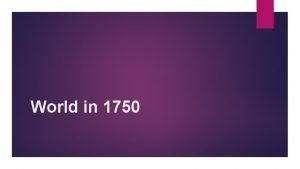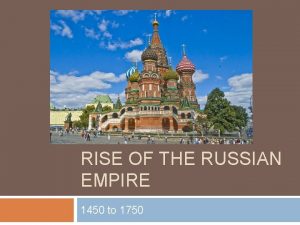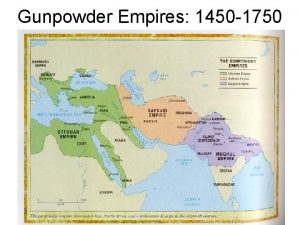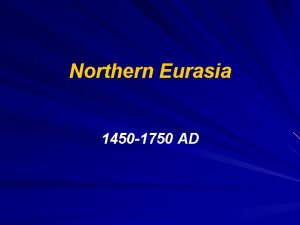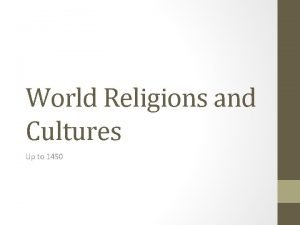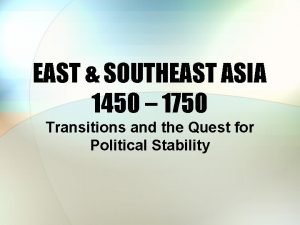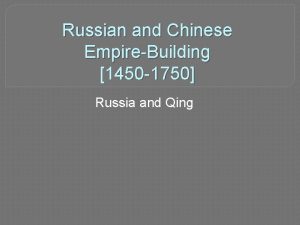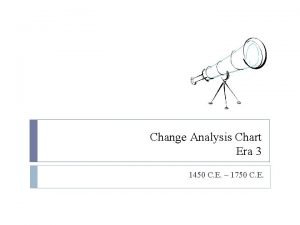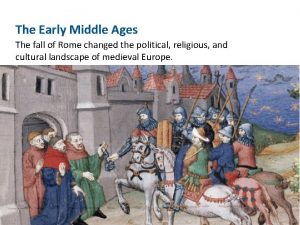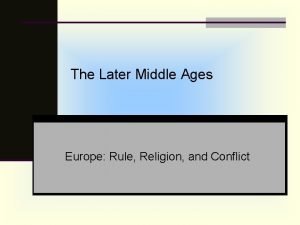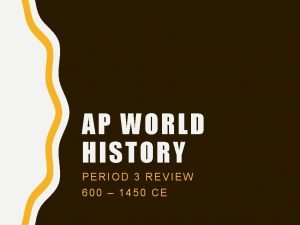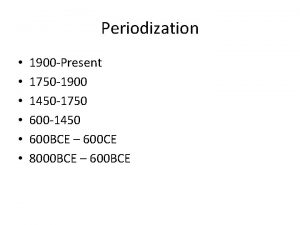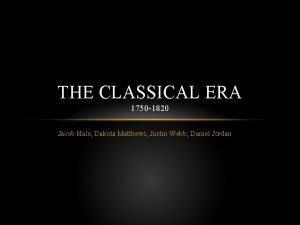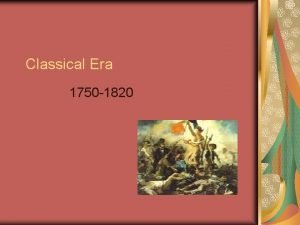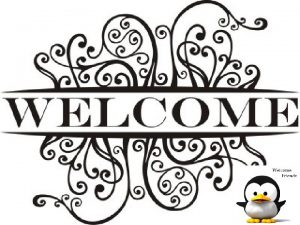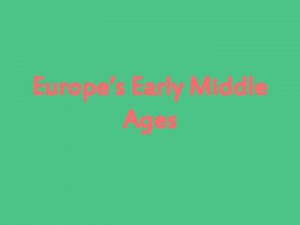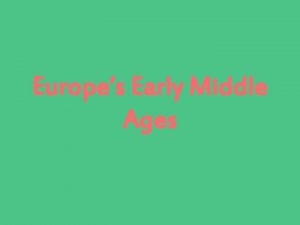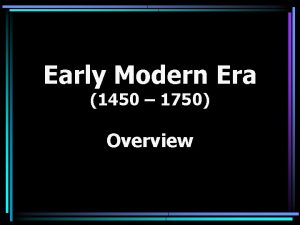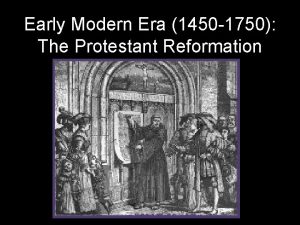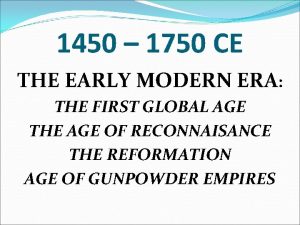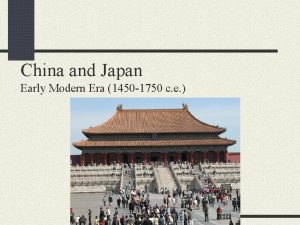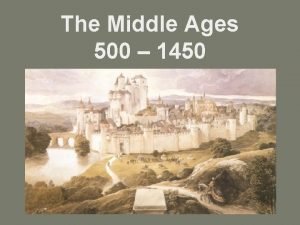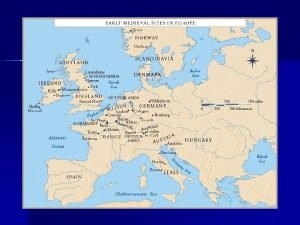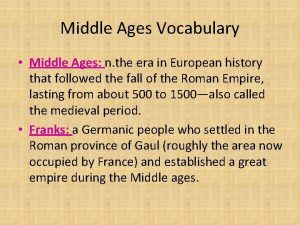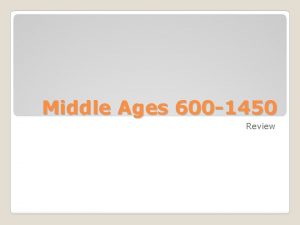EARLY MODERN ERA 1450 1750 Middle Ages 600

















- Slides: 17

EARLY MODERN ERA! 1450 -1750

Middle Ages (600 -1450) Renaissance (Late 1400 s) People begin to spend less time thinking about religion and God and more time thinking about the natural world around them.

RECAP: What were the effects of the Crusades?

What were the effects of the Crusades? • Interaction with Muslim and Byzantine civilization – Increased trade Growth of cities wealth – Discovery of Greek and Roman texts More diverse academic interests – Awareness of the “rest of the world” Curiosity Desire to explore

ART Renaissance CRUSADES (and exploration) NEW IDEAS!! in… POLITICS Absolute Monarchs SCIENCE Scientific Revolution **all of these are happening and progressing during the same time in the Early Modern Era.

How do the Crusades lead to the Renaissance? • Increased wealth – As cities grow and some merchants become very wealthy (especially in Italy – trading ports) – These wealthy men become patrons (sponsors of artists and scientists) and have no connection with the Church • More diverse academic interests – People no longer have to be a member of the Church to be welleducated, and so academics begin studying non-religious matters (philosophy, science, engineering, architecture, etc. ) • Desire to explore – As people become more aware of the wide world around them, they focus more of their time thinking about this Earth, rather than the Kingdom of Heaven

Secular Humanism • Secular: not religious • Humanism: placing the study and progress of human nature at the center of interests We can better understand this idea by looking at art throughout the end of the Middle Ages/early Renaissance…

Madonna and Child in Glory Jacopo di Cione, 1391

Miraculous Mass of St. Martin of Tours Franconian School, 1440

Adoration of the Magi by Botticelli, 1475

Madonna and Child by Raphael 1503

Mona Lisa by Leonardo da Vinci 1503 -1505/1507

Virgin of the Rocks by Leonardo da Vinci 1505 -1508

School of Athens by Raphael 1510

The Bean Eater Annibale Carracci, 1582/83


 Dark ages vs middle ages
Dark ages vs middle ages Renaissance vs medieval art
Renaissance vs medieval art Mughal empire 1450 to 1750
Mughal empire 1450 to 1750 Silver trade 1450 to 1750
Silver trade 1450 to 1750 Russian empire art 1450 to 1750
Russian empire art 1450 to 1750 Land based empires 1450 to 1750
Land based empires 1450 to 1750 Japan 1450-1750
Japan 1450-1750 Religion in 1450 to 1750
Religion in 1450 to 1750 Southeast asia 1450 to 1750
Southeast asia 1450 to 1750 Russia 1450 to 1750
Russia 1450 to 1750 Change analysis chart 1450 to 1750
Change analysis chart 1450 to 1750 Early middle ages
Early middle ages Early middle ages
Early middle ages Period 3 ap world history
Period 3 ap world history 1900-1450
1900-1450 Jacob pertl
Jacob pertl 1820-1750
1820-1750 Trigonometri
Trigonometri


